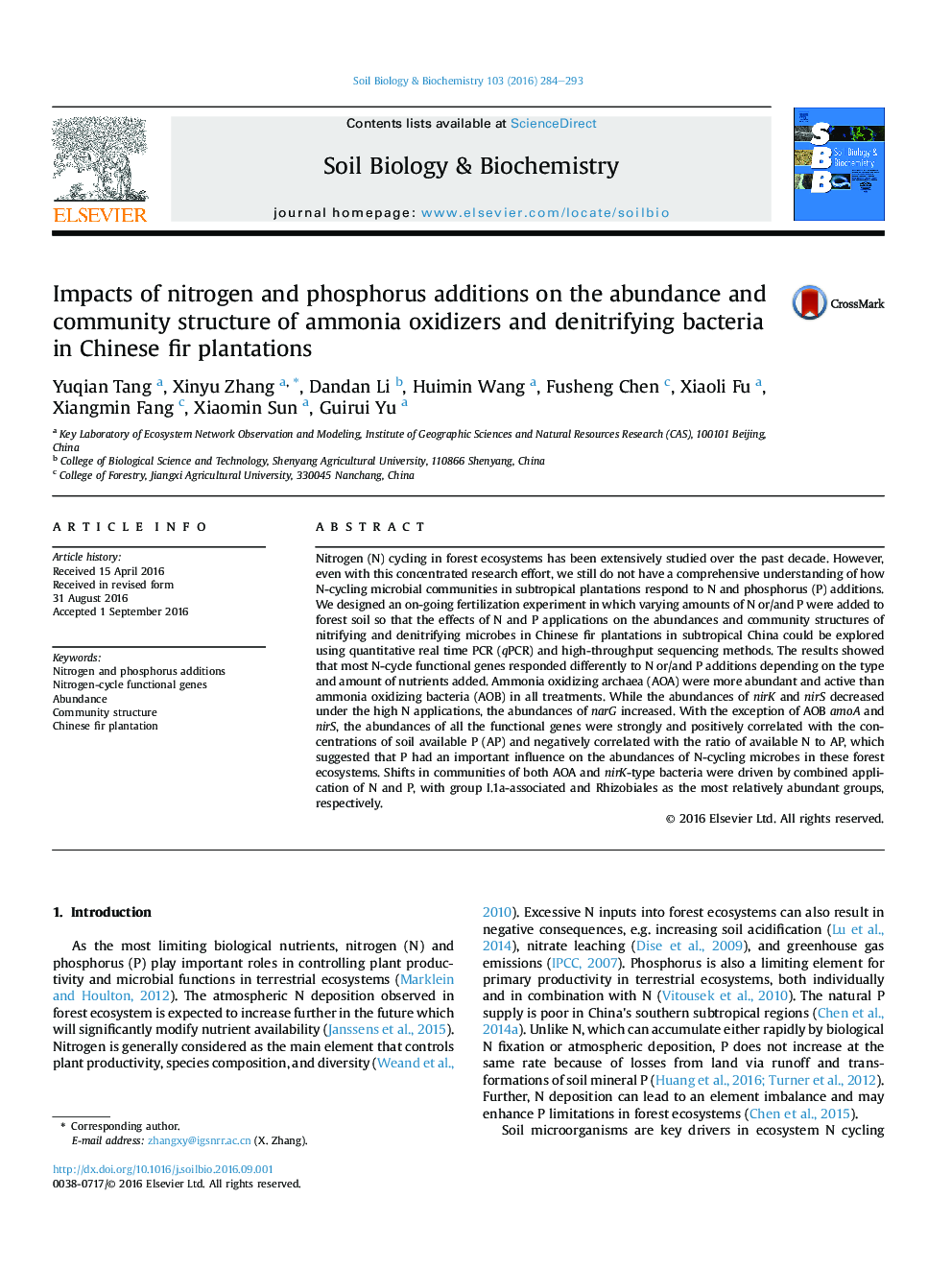| کد مقاله | کد نشریه | سال انتشار | مقاله انگلیسی | نسخه تمام متن |
|---|---|---|---|---|
| 8363282 | 1542581 | 2016 | 10 صفحه PDF | دانلود رایگان |
عنوان انگلیسی مقاله ISI
Impacts of nitrogen and phosphorus additions on the abundance and community structure of ammonia oxidizers and denitrifying bacteria in Chinese fir plantations
ترجمه فارسی عنوان
اثرات نیتروژن و فسفر اضافی بر میزان فراوانی و ساختار جامعه اکسید کننده های آمونیاک و باکتری های دندانی سازی در گیاهان چینی
دانلود مقاله + سفارش ترجمه
دانلود مقاله ISI انگلیسی
رایگان برای ایرانیان
کلمات کلیدی
افزودنیهای نیتروژن و فسفر، ژن های عملکردی چرخه نیتروژن، فراوانی، ساختار جامعه، قارچ چینی چینی،
موضوعات مرتبط
علوم زیستی و بیوفناوری
علوم کشاورزی و بیولوژیک
دانش خاک شناسی
چکیده انگلیسی
Nitrogen (N) cycling in forest ecosystems has been extensively studied over the past decade. However, even with this concentrated research effort, we still do not have a comprehensive understanding of how N-cycling microbial communities in subtropical plantations respond to N and phosphorus (P) additions. We designed an on-going fertilization experiment in which varying amounts of N or/and P were added to forest soil so that the effects of N and P applications on the abundances and community structures of nitrifying and denitrifying microbes in Chinese fir plantations in subtropical China could be explored using quantitative real time PCR (qPCR) and high-throughput sequencing methods. The results showed that most N-cycle functional genes responded differently to N or/and P additions depending on the type and amount of nutrients added. Ammonia oxidizing archaea (AOA) were more abundant and active than ammonia oxidizing bacteria (AOB) in all treatments. While the abundances of nirK and nirS decreased under the high N applications, the abundances of narG increased. With the exception of AOB amoA and nirS, the abundances of all the functional genes were strongly and positively correlated with the concentrations of soil available P (AP) and negatively correlated with the ratio of available N to AP, which suggested that P had an important influence on the abundances of N-cycling microbes in these forest ecosystems. Shifts in communities of both AOA and nirK-type bacteria were driven by combined application of N and P, with group I.1a-associated and Rhizobiales as the most relatively abundant groups, respectively.
ناشر
Database: Elsevier - ScienceDirect (ساینس دایرکت)
Journal: Soil Biology and Biochemistry - Volume 103, December 2016, Pages 284-293
Journal: Soil Biology and Biochemistry - Volume 103, December 2016, Pages 284-293
نویسندگان
Yuqian Tang, Xinyu Zhang, Dandan Li, Huimin Wang, Fusheng Chen, Xiaoli Fu, Xiangmin Fang, Xiaomin Sun, Guirui Yu,
